










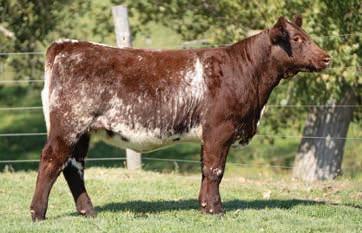






















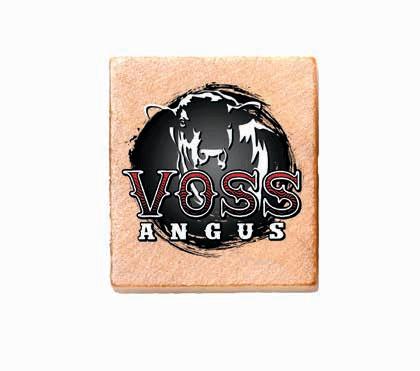






































Thanks for joining us! We are a free, premier livestock publication featuring and serving seedstock and commercial beef producers nationwide. Raising cattle is so much more than a hobby; it is our livelihood and our passion. We understand that, and in every issue want you to see not only incredible cattle, but also relatable, entertaining, and informative editorial features for the producer with 5 or 500 head.
To us, you are more than reader or advertiser; you are a beef producer. We are committed to doing our best for you, every day. Please feel free to communicate with us, your input is appreciated.
BILL SCHERMER, Owner/Herd Consultant
641.425.2641 | bill@stockmanmag.com

Bill and his wife, Nancy, have made their living in the cattle industry. He has provided marketing services for purebred and commercial breeders since 1970. Schermer Angus Cattle continues to be active in the NJAA and raises quality cattle near Clarion, IA. As owner of The Stockman, Bill leads by example providing producers with the highest level of customer service.
CHERYL KEPES, Assistant Editor
417.766.0990
cheryl@stockmanmag.com

Working for The Stockman is the perfect combination of two of Cheryl’s favorite things: writing and cattle. Cheryl has decades of experience as a professional writer. She finds great joy in sharing stories about people in the agricultural industry. Cheryl’s family raises registered Angus, Red Angus, and Simmental cattle in Fair Grove, MO.
KIM BANKS, Graphics
507.530.0914
kkbanks@frontiernet.net

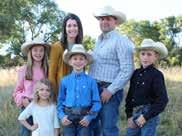
Makayla serves as editor, graphic designer, and manager of The Stockman. Her focus and passion continues to provide high quality service and original promotional materials to cattlemen. She and her husband, Jared, raise their four kids, and together they run their family operation, JMF Herefords and SimAngus, near Morris in west central MN.
SARAH HILL, Editorial Writer
307.274.0419
sarahhill1007@yahoo.com

Kim is a graphic designer with many years of design experience. Producing creative marketing materials to help others look their best is what she loves doing the most. She and her husband, Kevin, along with their son, raise grain and have a small commercial cow/calf and feeder operation on the family farm near Lynd, MN.
MARIA OPHEIM, Social Media Manager
507.828.1374 riawbr@gmail.com

Maria, her husband Cade, and daughter Tawnee, of Mound City, S.D. currently reside on their fifth
generation commercial & Limousin cattle and grain operation. Maria also works as a R.N. She is excited to promote producers through The Stockman’s social media platforms!

Sarah lives on a small hobby farm near Arlington, SD, with her husband, Braeton, and their three daughters: Harper, 8, Vayentha, 5, and Aurora, 1. She grew up on a Missouri dairy farm and has an Agricultural Journalism degree from the University of Missouri. Sarah enjoys baking, reading, and gardening.
SAWYER STYLES, Social Media Intern
605-290-6887
sawyer.styles@outlook.com

Sawyer Styles, originally from Brentford, South Dakota, grew up on her family’s registered Angus operation, where she developed a deep connection to agriculture and rural life. She attends SDSU and is just wrapping up a semester studying at Oklahoma State University.
715.573.0153
tcreds@gmail.com

Ty works alongside his family in their purebred operations, Country Lane Farm and TC Reds near Ringle, WI. An advocate for youth programs and dedicated cow/calf man, he is excited to help producers merchandise their cattle. TY
JAN FORD
800.693.8048
jford17879@aol.com

With her passion for agriculture, Jan brings over 35+ years of advertising sales experience in the beef industry. She and her late husband Norm had a commercial Angus cow herd and grain operation near Tipton, IA, which her sons still manage today.
BRIGHAM AND MEGAN STEWART
785.747.8028
megancollisondvm@gmail.com

Brigham works alongside his parents at Mid Continent Farms, their large, multi-breed cow/calf operation in Kansas. Megan graduated from ISU as a DVM in the spring of 2021 and is a big part of her family’s Angus herd and Veterinary Clinic in Iowa.
CHAD AND BRANDI CLAUSSEN
563.349.5089
chad.claussen@yahoo.com

Chad Claussen and his wife, Brandi, along with their two sons, operate purebred and commercial cow herds in Stockton, Iowa. The Claussen family also enjoys showing cattle, goats, and sheep. Off the farm, Chad works in the HVAC industry and Brandi works as an inventory and harvest coordinator.
RON HINRICHSEN
785.770.0222
rlangus@bluevalley.net

For the past 30 years, Ron, his wife, Lynne, and their two children have owned and operated Hinrichsen Ranch, a registered Angus ranch in Westmoreland, KS. He has an extensive background in the agricultural industry and is excited to put it to work for each of his customers.
CARTER WARD
carterward79@gmail.com
816.261.0891

Carter resides in Plattsburg, MO, with his girlfriend, Mandi, where they help run Ward Brothers Livestock with Carter’s family - their primary focus is Angus show cattle. Carter is also a partner in Campbell/Ward show cattle that specializes in the Hereford breed.
970.596.4965
creamer b 150@hotmail.com

Brandon owns Lazy JB Angus with his parents and sister in Montrose, CO. Raised in the cattle industry, he has a true passion for it and loves marketing quality cattle throughout the US. BRANDON CREAMER
LORA HUTCHINS
615.293.3695
loralea1172@gmail.com

Lora owns and operates Destiny Angus Farm with husband Brian and daughter Morgan in Charleston, IL. They have raised and shown cattle successfully on the national level for several years. They also have owned a production herd with as many as 200 registered cows.
STEVE WOLFF
701.710.1574
swolff318@yahoo.com

Steve is a third generation Hereford breeder - his family has been raising Herefords since 1951. He offers bulls by private treaty every year and has a heifer sale every fall. Steve also enjoys traveling to sales and shows whenever possible and likes camping as well.




Reflections
University
Spickler

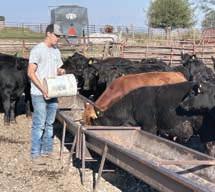



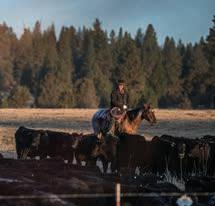
MAKAYLA
605.690.6050

It seems like the crazy hustle and bustle of life is a normal thing for everyone these days. You ask someone how they’re doing, and you almost always hear how busy they are as a response. Even though I am guilty of saying that too, I’m becoming less fond of the word ‘busy.’ Hearing that word has become my signal to check in with myself and reflect on what I have been spending my time on. Am I filling my time with beneficial tasks, or do I need to let go of something? Am I pouring enough of my heart into my husband and kids? Do I need to adjust and reframe my time so that I can accomplish all that needs to be done, both in our home and on the farm? It’s become a reality check on my priorities. So instead I say that my plate is full. It’s a wonderful mix that keeps our hearts and minds focused on our family and the future of our farm, and I am grateful to be doing everything that I am.
We will literally be filling our plates in a few weeks as we express our gratitude this Thanksgiving season. Even though most, if not all of us, have endured a trial of some sort during this past year, we still have so much to be thankful for. And our Stockman team is thankful for you! Your continued support is much appreciated, and we hope that we are providing an exciting, informational, purposeful resource in return.
Sending warm Thanksgiving greetings to you and your family!
December 1, 2025
January 1, 2026
February 1, 2026
March 1, 2026
April 1, 2026
May 1, 2026
August 1, 2026
September 1, 2026
October 1, 2026
November 1, 2026
November 10
December 1
January 10
February 10
March 10
April 10
July 10
August 10
September 10
October 10




rate/issue
full page $800
half page $450
third page $350
reference card $80
double card $300
ring service call for a quote
















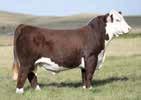































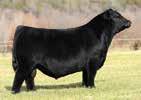

















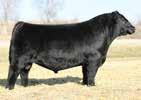

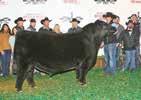



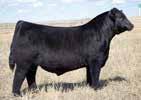






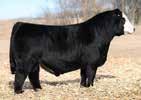













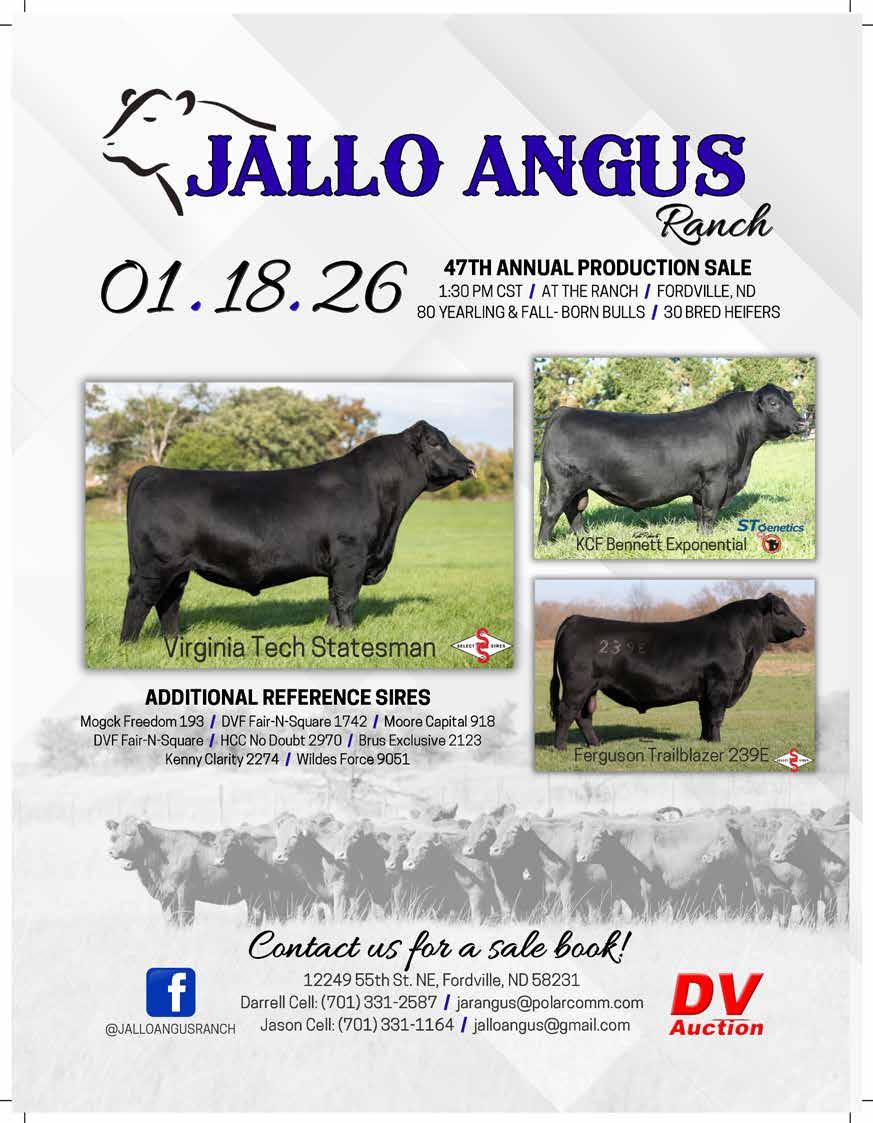

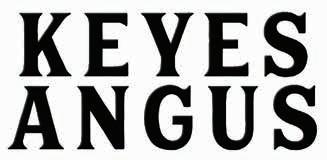















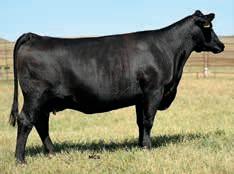










By
Reflections from the heart and hand of Sandeen Genetics owner Scott Sandeen.
Sandeen Genetics, Blakesburg, Iowa, produces the type of cattle that many producers dream about. Their Simmental and SimAngus females possess a perfect balance of
maternal power and beauty. Not to mention, they fetch jaw-dropping sale prices. For instance, Sandeen Donna 8302 brought $262,000 for half interest in 2023.

The Stockman reached out to the owner of Sandeen Genetics, Scott Sandeen, and asked him to offer insight into his agriculture roots, strategies for breeding, and the roadmap for Sandeen Genetics’ success. He graciously shared the following in his own words.
The story of Sandeen Genetics traces back to 1948 when my great-grandfather, W.L. Swaim, first purchased the original 160-acre piece of ground that we still live on today. Actually, our history goes back a few years prior to that, when he was managing what was known at the time as the Doc Pearson farm. A beautiful grass farm that would have been perfect for W.L.’s dream of raising and selling his registered horned Hereford bulls. After several unsuccessful attempts to acquire that farm, the opportunity arose to purchase what is now the headquarters of Sandeen Genetics.
Though W.L. was unable to purchase the property he originally had his heart set on, things fell into

place allowing us to buy it some 60 years later, during the Great Recession of 2008. Now it all ties together with the home place, making a contiguous 1,200-acre spread of lush, green rolling hills, dotted with solid black and black baldie cows. Though my great-grandfather may have preferred Hereford cows, I think he would be proud to have his entire family living and working on the same ground that he strived to acquire many decades ago.
I’m Scott Sandeen and my wife, Jill, and I represent the fourth generation, and our two sons (along with their cousins) are the fifth generation on this land. We raise and market registered seedstock genetics. I believe that’s something that’s just in your blood. You either have it, or you don’t.
My children share the family’s passion for agriculture. Jill and I’s oldest son, Logan (19), currently attends Iowa State University. Our youngest, Lawson (16), works tirelessly every day on our operation without missing a beat in his high school endeavors.
In addition to running the Simmental and SimAngus cattle operation, in 2020 we purchased a Titan West Livestock Equipment dealership. We enjoy selling the brand of equipment we have used on our operation for 30 years.
Many facets of the family are foundational to the inspiration and success of Sandeen Genetics. My
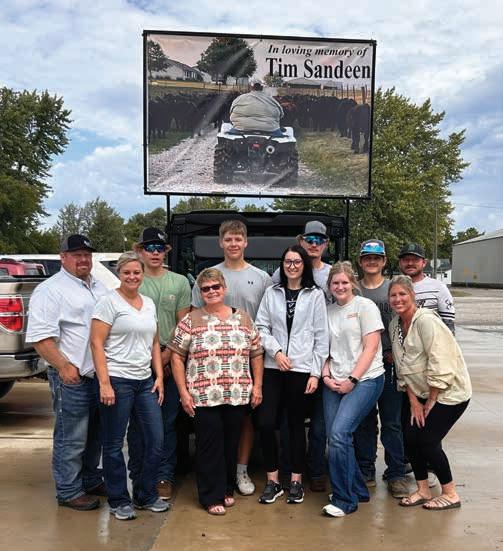

mother, Rhonda, comes from a family of great stockmen, firmly rooted in the commercial cattle industry. I rely heavily on the mechanical expertise of my brother, Eric, who owns a diesel shop and ensures the farm’s equipment keeps
running. Eric and his wife, Julie, are also very involved in the farming operation, as are their children, Kennedy and Wyatt, who do much of the AIing of the sale heifers these days.

I was only 2 years old when W.L. died, but I seemingly inherited his love for studying and understanding genetics and his appreciation for quality stock. He was said to have been a man of vision and one to take action when it came to searching out and acquiring the best seedstock possible to improve his registered horned Hereford herd. These were the traits that my dad, Tim, obviously attained from his many hours spent learning from “Pa,” as he referred to his grandfather.
My dad’s father, Fred Sandeen, also had a heart for agriculture, particularly row crops. His farming career took at tragic turn when my dad was 13 years old. Fred became paralyzed following a surgery he endured to remove a brain tumor.
I lost my dad (who I worked side-by-side with daily) two years ago. As I reflect on him, he too was undoubtedly a man of vision and action. When I was a young boy growing up in the 80s and 90s, we would occasionally go to a sale. At the sales I always wanted to try to buy, what was considered, the really good cattle at that time. But Dad would usually shut me down.
Fortunately, I had two things working in my favor, but I didn’t realize or appreciate them at the time. First,

I didn’t have the funds to buy what I thought I wanted, and second, my dad would preach to me that those are not the kind of cows you want. It aggravated me that he wouldn’t get on board with the idea, but looking back it’s obvious - he was right. Those cattle were tall, gut-

less, hard-doing, and poor-structured. He knew they were not what we needed to make a herd of cows out of. He also knew we simply didn’t have the resources to supplement a herd of cows like that.
Dad had already learned these lessons out of necessity, as he was unexpectedly handed the reins to the operation when his grandfather, W.L., died of pneumonia, in 1983, at the peak of the 1980s farm crisis. At that point, Dad had to figure out, real quick, how to make a living with a herd of Hereford cows, when money was tight in the country and nobody wanted to buy a Hereford bull.
Immediately, he pivoted to a commercial operation and bought some of the more moderate framed Angus bulls he could find at the time to breed to his grandpa’s Hereford cows. The resulting replacement heifers from that forward thinking move, would become the cow herd

that I would grow up with and learn from.
It took me a few years to figure out Dad’s train of thought of not wanting what was popular at
the time, but it eventually sunk in when I started to evaluate those black baldie cows he had raised. As the years went on, I noticed how easy-fleshing and productive


they were and how long they lasted. Many of them produced well into their teens and a few hitting 20 years old.
I learned to study and appreciate the good structured, economically efficient, commercial stock that we had at the time. I also realized along the way that if I wanted those really high caliber Simmental cattle that I had my eyes set on, I was going to have to try to become a really good breeder and raise them myself. We certainly couldn’t buy our way there. Looking back, that was probably the single greatest thing that could have happened to me.
I’ve learned over the years that there truly is an art to breeding good cattle! I absolutely admire the rare ones that we can consider to be master breeders. The true artists in breeding cattle are getting fewer all the time. Many breeders are becoming dependent on a computer making their breeding decisions for them, and it’s causing the true stockman to become a dying breed.
I’m all for technology and the use of scientific methods as a tool, but not as a total replacement of a true stockman’s well-trained eye.
My dad always preached to me to “breed for females that will make great cows, and you’ll always stay in business!” But there are many traits in making great cows that are hard to quantify with a number. That stockman type mentality is probably what’s kept us in business all these years. We expect the stock that we sell to have all the fundamentals in check to go out and make a highly functional cow for many years to come. But I think one thing that makes our cat-

tle somewhat unique, is that we’ve worked very hard to blend the most functional, maternal type genetics with an extra attractive phenotype, so you can be proud to go out and see what you’ve got grazing your pastures.
I’ve had numerous customers tell me that their freeze branded Sandeen cows are always the ones that visitors ask about, and that’s quite a compliment to us! Although we’ve really never spent much time in the show ring, we’ve always worked hard to breed cattle that stand out and have that certain look about them, so you know that’s a Sandeen cow.

Cow families are extremely important to us. Over the years we’ve narrowed it down to just a handful of cow families that have consistently produced those particular traits we deem non-negotiable in our breeding program and have continued to do it generationally.
Likely the most recognizable of those cow families would be the Donna tribe. Derived from the Angus strain of this cow family, which has been further developed and vigorously utilized by the Coleman Angus Ranch in Montana. They have gained worldwide notoriety for their exceptional maternal oriented characteristics and massively constructed phenotype.
When we saw the original Donna J311 cow in one of Coleman’s first sale ads we believed that was one of the greatest Angus cows we had ever seen. The following year, Coleman highlighted their ad with Coleman Donna 386, the direct daughter of Donna J311, which was perhaps even more impressive. At that point, Dad and I both agreed that we needed to somehow harness the goodness of those Donna cows to begin a new genetic line in the Simmental breed.
We were extremely fortunate that everything fell into place to allow that to come to fruition when Sandeen Donna 8386 emerged. She represented the original half-blood SimAngus matriarch that nearly all of our Donnas trace back to today.
Within each of the cow families that we utilize today, we try to recognize the very best individuals that we believe will have the ability to further progress the characteristics we desire for the next generation amongst their family line. The most efficient way we’ve found to do this is by using a rather intensive In Vitro Fertilization (IVF) program.
We have done most of our genetic multiplying work through Trans Ova Genetics for nearly 30 years with very consistent, successful results. We will generally work anywhere from 12 to 20 donors per year, with many of them being partnership cows owned with other breeders from across the country.
In the partnership scenario, we feel the fairest way is to split the embryos. So, you have your embryos, and we have ours. Then when it’s time to market the progeny from those embryos, we offer the option for the partner to sell their embryos or offspring back through our annual Buildin’ a Brand sale, held the second Saturday of December each year. We feel that helps give a little security to the folks who might be buying a new donor, if they know they have the option of a built-in market to help sell their product if they need it.

Saturday, December 13, 2025 12:00 PM - Blakesburg, Iowa
a jumpstart with the best genetics possible for their budget.
One thing I want the young Simmental or livestock enthusiasts in general to know… Many of the “big name” breeders you see advertised in all the livestock publications or the ones standing in front of the backdrop holding a grand champion banner, came from a very humble beginning and just worked their tail off to get to where they’re at. So, don’t ever be intimidated or too afraid to talk to them to ask for advice. Most have been right where you are today and would love to help.
We were very fortunate when we were just starting out in the Simmental business to be surrounded by some really good, established breeders like Larry Drake, Denny Cason, and Reck Bros. who were willing to help a young guy out. I’ve never forgotten that, and we’ve always tried to do what we could to help a young or new breeder get learn more sandeengenetics.com


COLEMAN DONNA 8146
AAA#19248244
2025 sale features include six females out of the most powerful Connealy Thunder daughter to be found, sired by Coleman Glacier 041, Coleman Rock 7200, Hummel South America, and ZWT Blue Blood 1508. They typify the quality in the 2025 ZWT Fully Loaded Sale! Maternal Power at its best!


BLAIRSWEST ERICA 77J AAA#20978237
Your first opportunity to purchase offspring in the U.S. out of the 2023 Canadian Western Agribition Champion Angus Female. Her sensational son by SAV Renovation 6822 will be featured as Lot 1! Selling daughters by SAV Renovation 6822 and ZWT Blue Blood 1508 as well as a flush to the bull of your choice! Get in on the ground floor of the most unique power cow in America!
85 Registered Angus Females
> 25 Featured Spring Heifer Calves
> 25 Fall Yearling Heifers
> 10 Fall Bred Heifers
> 20 Spring Bred Heifers
> 5 Select Donor Cows
70 Registered Angus Bulls
The Deepest set of Herd Sires ever offered from ZWT
> 20 coming 2 year olds
> 50 Spring 18-20 month old bulls
50 Commercial Females
> Including bred cows and heifers

AAA#21054061


AAA# 21063059
A powerful and incredibly well balanced son of SAV Rainfall 6846 out of the now-deceased Pine Coulee Patsy A13. His full sister was a featured high selling female in the 2023 ZWT Fully Loaded Sale to Rust Mountain View Ranch.
AAA#21053716
A stout made, attractive son of SAV Renovation 6822 out of Coleman Donna 8146, the female chosen by Tony Mayes to carry on the Donna 386/714 lineage at ZWT Ranch. This bull has Power-Maternal written all over him!
This son of the outcross sire, Hummel South America, is powerfully constructed, as one would expect from his dam, Pine Coulee Patsy A13. He is very wide-based and deep-sided. As stout as you will find! >


AAA#21054058
One of three outstanding full brothers sired by Coleman Glacier 041 out of Mill Brae Joanie 3063. This deep-sided, long bodied individual is typical of the quality and uniformity of these flush brothers. Power-Maternal at its best!


O P E N H O U S E November 15, 2025 Day of Sale



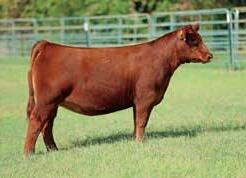



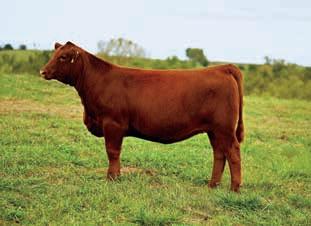
























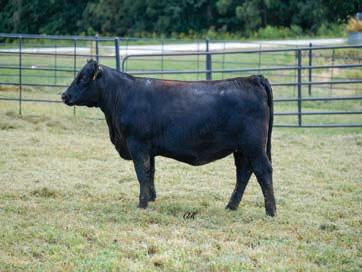







Aaron Berger, Nebraska Extension Educator University of NE - Lincoln, UNL Beef beef.unl.edu
University research you can use.
The late Dr. Danny Klinefelter was an Agricultural Economist from Texas A&M who developed and coordinated the well-known course, The Executive Program for Agricultural Producers, which he initiated in 1991. Over 2,000 producers have completed the program since it started.
Dr. Klinefelter wrote numerous articles about his experiences working with agricultural producers and the consistent characteristics he observed in those who were successful business managers. In 2017, he wrote an article titled “Farewell, It Has Been an Interesting Ride” in
which he highlighted sixteen things he identified that he saw top farmers and ranchers consistently did in their businesses.
One of those things he identified is “The 5% rule.” According to Dr. Klinefelter, “A 5% increase in price received, a 5% decrease in costs, and a 5% increase in yield (production) will often produce more than a 100% increase in net returns. The effect is cumulative, multiplicative, and compounding.”
How might the 5% principles apply to an “average” cow-calf herd? Consider the following example:
Let’s assume an “average” 100head cow herd with an annual economic cost of $1,500 per cow and an 85% calf crop weaned per cow exposed. Calves average 550 lbs. when sold at weaning for $3.50 per pound.

Gross income from calf sales 85 X 550 lbs. X $3.50 per pound =$163,625
Annual cow cost of $1500 per cow X 100 cows in the herd =$150,000
NET INCOME = $13,625
This is a profit per cow of $136.25.
Now, let’s assume a 5% improvement in the percentage of calves weaned per cow exposed (89%), a 5% reduction in annual cow costs ($1,425), and a 5% increase in the price received for calves ($3.68 per pound) when sold at weaning. The weaning weight of 550 lbs. stays the same.
Gross income from calf sales
89 X 550 lbs. X $3.68 per pound
=$180,136
Annual cow cost of $1425 per cow X 100 cows in the herd
=$142,500
NET INCOME = $37,636
This is a profit per cow of $376.36 or $240.11 more per head than the “average” production cow herd.
In this scenario, when management of the cow herd improved the number of calves weaned per cow exposed to breeding by 5%, decreased annual cow costs by 5%, and captured a 5% increase in sales price, it resulted in a 276% increase in net income from the cow herd.
“Studies show that the most sustained success comes from doing 20 things 5 percent better, rather than doing one thing 100 percent better,” Klinefelter says. “Also, the most profitable producers tend to be only about 5 percent better than average farmers in terms of costs, production, or marketing.”
Nickels and dimes add up to dollars! The continuous pursuit of improvement through several small changes can make a significant dif-
ference in cow-calf profitability. In this year of historically high cattle prices, consider strategic investments that will improve the longterm economic competitiveness of the cow-calf enterprise. Are there “points of leverage” where tactically utilizing an input could have a substantial improvement in production? Assess also returns on inputs. Are there any processes that could be reduced or eliminated without significantly impacting production?
The framework of “the 5% rule” provides a tangible goal and thought process to evaluate ways to improve production and marketing while also reducing costs. It is also a reminder that minor improvements across several areas can significantly improve overall profitability.
Courtesy University of NE - Lincoln, UNL Beef
Interviews with the authors of BeefWatch newsletter articles become available throughout the month of publication and are accessible at: www.go.unl.edu/podcast.









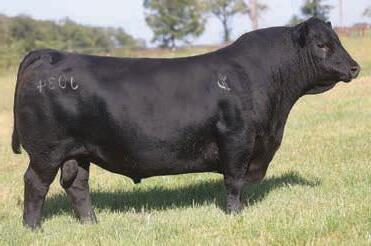











Made with pride in the USA. Always have been. Always will be.

Y-TEX® ID ear tags give you American quality at its very best.
At Y-TEX®, we don’t believe in off-shoring production of our All-American® two-piece tags or Y-Tags™ onepiece visual identification ear tags. After all, why risk shipping bottlenecks and other supply chain problems just to save a few pennies per tag in production costs?
Every American-made Y-TEX® ID tag features advanced polyurethane construction for unmatched flexibility and durability. State-of-the-art 100% PureLaser™ imprinting for superior legibility that’s guaranteed for the life of the animal. Minimally invasive tips for faster healing and maximum tag retention. And, easy-to-use taggers for time-saving convenience.
If you take pride in a job well done and believe in American quality, ask your livestock products supplier for Y-TEX® ID ear tags or go to www.y-tex.com to learn more.
Always read and follow label directions. Y-TEX® and All-American® are registered trademarks of Y-TEX Corporation. Y-Tags™ and Purelaser™ are trademarks of Y-TEX Corporation. © 2023 Y-TEX Corporation.

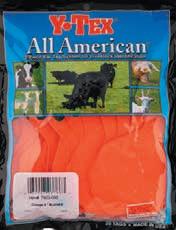
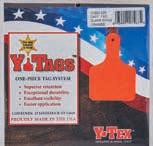



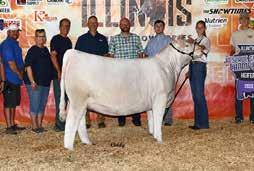

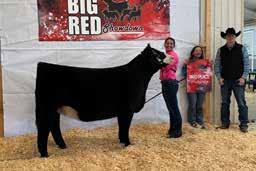

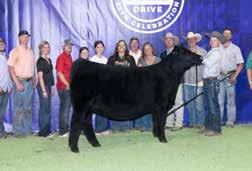
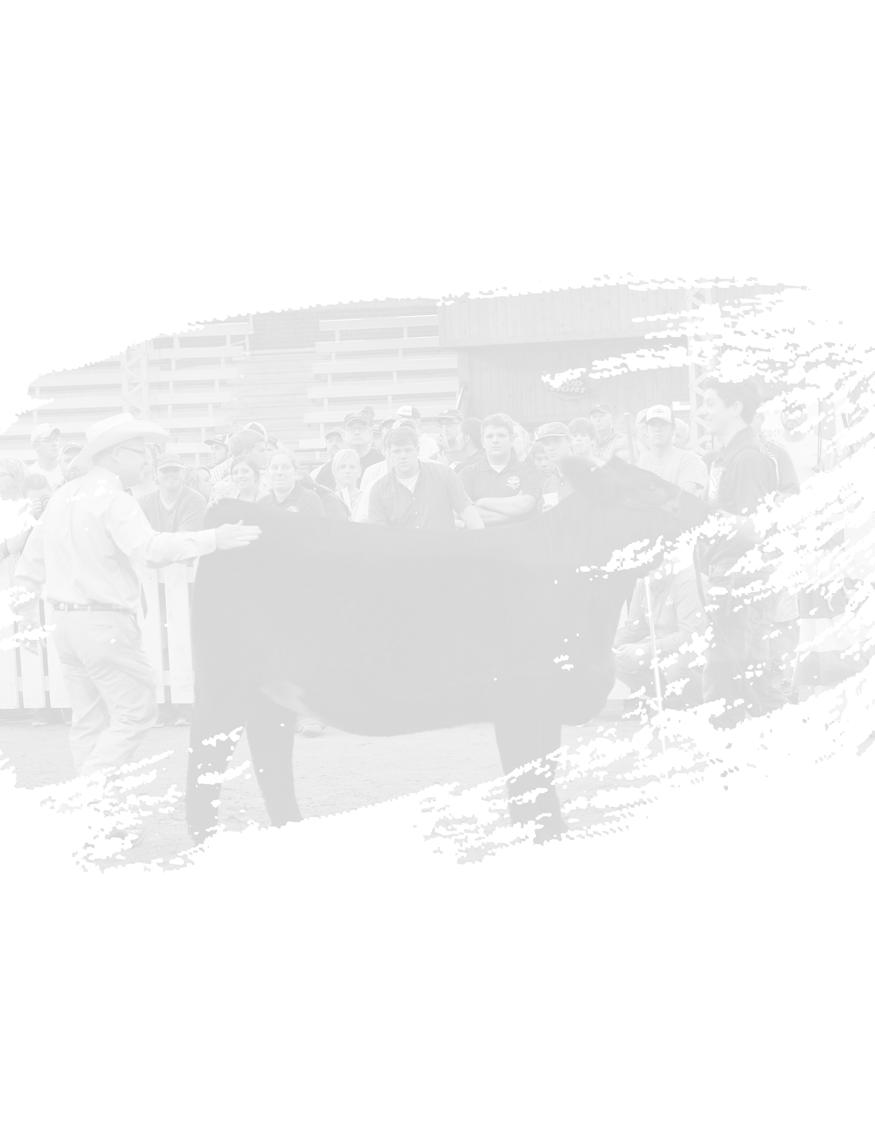





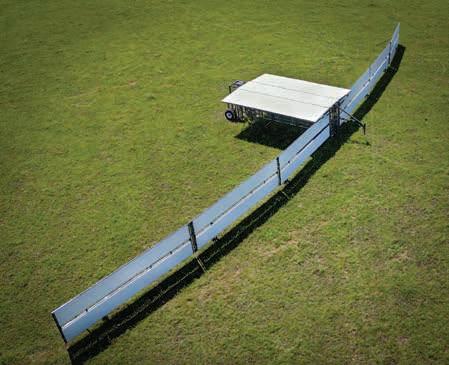










By Sarah Hill photos courtesy Swindler
University of Missouri freshman and State FFA officer Gage Swindler forges his own path in the cattle industry.
It’s hard to say what the future of the beef business holds, but one thing we know for sure is that there are young people willing to step up and take on leadership roles. One of those young people is Gage Swindler from Braymer, Mo. A freshman at the University of Missouri in Agribusiness Management, Swindler also serves as a Missouri FFA State Vice President.
Swindler grew on his family’s Angus and Gelbvieh cow calf operation owned by his grandparents, Dale and Ruth Ann Swindler, and his parents, Justin and Erika Swindler. Gage is the fifth generation on the operation. Through the 80’s and 90’s the farm was focused on swine and row crops, but in the mid 90’s switched from swine to cattle. While in high school, Justin was tasked with developing the cattle herd into what it is today.
“My grandpa only had a handful of cattle, and as the hog market crashed in the 1990s and my dad joined the operation, we started slowly adding to where it is now,” Gage Swindler said. “Today, there are 250 head in our herd.”

The Swindler family’s cattle herd was primarily Angus for many years, but about 12 years ago, they began adding Gelbvieh genetics to the herd to cross for Balancer calves. The herd is about a quarter Gelbvieh today.
“They were really good cattle, and we knew the Gelbvieh breed offered a lot of opportunities in showing and for juniors,” Swindler said. “We decided we loved the breed and kept growing it in our herd.”
Swindler said the family strives to breed the best cattle possible, with structural soundness, profitability, and docility.
“Better cows raise better calves. Docility is very important to us, since we work with them a lot and want them to be calm and gentle-natured,” he said. “We also cull very hard on structure, and we also want cattle with fast growth that are stout made and functional and have good milking ability.”
The family uses AI and embryo transfer to improve the herd’s genetics. In his drive to push for constant improvement, Swindler took to showing his animals.
“I enjoy showing the cattle we raise at local, state, and national shows,” he said.
Beef cattle were an integral part of Swindler’s supervised agricultural experience (SAE) in FFA, as part of a diversified livestock operation including a cow-calf cattle herd, a farrow-to-finish Berkshire and Chester White swine operation, laying hens and broilers. The 2025 Missouri State FFA Convention was an exciting one for Swindler, who also competed on the state-winning livestock judging team, in addition to being named a state FFA officer.
Although he’s now away at college, Swindler said he’s still helping make choices on breeding, marketing and general direction for his family’s cattle herd and his own cattle, while also furthering his knowledge on the beef industry in every way he can.


“We just weaned calves, and will soon start sorting which replacement heifers to keep and sell,” he said.
Living away from home at college is Swindler’s first time living in a more urban area and being surrounded by people without any knowledge of agriculture. This scenario presents him with numerous opportunities to meet new people and have conversations with them about the beef industry, educating them on where their beef comes from. At college, Swindler is a member of Alpha Gamma Rho fraternity and participates in Collegiate Farm Bureau and the Agribusiness Club.
Looking ahead, Swindler said he plans to pursue a career in ag-



riculture while continuing to work on the family farm and growing his own cattle operation. Swindler said he and his three younger brothers are all committed to maintaining the family farm and cattle herd.
Swindler also takes advantage of being in nature during his spare time. “I enjoy hunting and fishing every chance I can get,” he said.
Swindler shared his thoughts on the biggest challenges facing young
people in the beef industry today.
“The decrease in pasture acres is a big challenge,” he said. “More pasture is being tilled up for row crops, which makes it harder for younger cattle producers to expand their operations. With cattle prices at an all-time high, it can make it harder for younger producers to buy heifers and cows to use to build their herds.”
The future leader encourages other young people to get involved in the beef industry and explore all of the opportunities the industry has to offer.
“There are a variety of jobs that are necessary for the beef industry to be successful, and with the labor shortage, there is no better time than now to get involved,” he said.
Swindler also shared words of advice for other young people looking to a career in the beef industry. “It may not always be the easiest way of life, but if you stick with it and work hard every day, then you have a good shot of it paying off,” he said.
A FULL SERVICE ANGUS & BEEF OUTFIT

Fred Linz | Owner
Ben Weis | Ranch Manager
Anthony Randall | Cattle Procurement Manager













SALE BOOK IS PACKED WITH INFORMATION AND PHOTOS OF THE OFFERING. IT’S INCLUDED WITH THE ANGUS JOURNAL, ONLINE OR BY REQUEST FROM THE FARM.

SYDGEN VERIFIED 4526

SYDGEN SMOKEY 5023

SYDGEN PRINCESS 4020

SYDGEN RITA 4502
For more on our sale offering or semen & certificates on herd sires, call 573-581-1225.
Number 2 for adj. YW and %IMF in our toughest contemporary group.
SALE DAY PHONES
573-581-1225 573-253-8588

The top $Combination value in the entire offering.
Lead bred heifer, and due in January to RSA True Balance.
One of the many top fall yearling heifers in the offering.
47TH ANNUAL PRODUCTION SALE NOVEMBER 22, 2025
10 AM • AT THE FARM • MEXICO, MO
SELLING 560 HEAD
77 Bull Calves • 107 Fall Yearling Bulls
67 Spring Cows • 55 Fall-calving Pairs
82 Fall Yearling Heifers • 61 Bred Heifers
57 Heifer Calves • 1 “Pick”Lot
• Our largest offering of progeny by GAR Verified 2683, who excels for carcass merit, foot structure and calving ease.
• Our first sampling of calves by WL-HR Sunshine 2778, exceptional for TEAT, UDDR, FL and Hair Shed.
• Although still a “virtual dispersion” of our seven-year-old cows, we will sell a lot of three- to six-year-olds.
• 100% of the cattle four years of age and younger are genomic tested and parentage verified. Most of the older cows are as well.
• The 107 fall yearling bulls offered average 1,324 lbs. adj. YW, 37.7 cm SC, 5.9 frame, 3.80% IMF, 15.7 adj. RE and rib fat cover of .35.
• The 184 total bulls offered average EPDs are 7 CED, 139 YW, 13.1 HP, .42 Claw, 1.12 MARB, +74 $M, +195 $B and +327 $C.
• Weights and ratios are in the sale book, and we print a 10-12 page update sheet on sale day with current weights, frame scores and scan data on everything less than 18 months.
THE GENETICS BEHIND THE PROGRAM
Sorting the high-accuracy sires of the breed (.85 for YW and .65 for CW), turns up eight Sydenstricker Sires in the top 100 for $Combination. These widely-used landmark sires with multi-herd proofs add consistency and predictability to any breeding program. Descendants of SydGen Exceed 3223, SydGen FATE 2800, SydGen Black Pearl 2006, SydGen Enhance, Connealy Cool 39L, EXAR Stud 4658B, SydGen 1407 Corona 2016 and SAF Connection will play a major role as the genetic base for much of this sale offering. The herd is enrolled in Maternal Plus®.
We will also offer progeny of Connealy Clarity, RSA True Balance, SydGen Smokey, GAR Verified, SydGen Validate, Basin Jameson, FF Rito Ambitious, Crouch Congress, Schiefelbein Executive and many others.
Past graduates of this annual event include five sires that went on to top $1M in semen and certificate sales. Their selling prices ranged from $2,800 to $68,000. These sires are SAF Fame, SAF Focus of ER, SAF 598 Bando 5175, SydGen CC&7 and SydGen Enhance.
27TH ANNUAL SYDGEN INFLUENCE HEIFER SALE
On December 5 about 7 pm, we will host our annual commercial heifer sale at Callaway Livestock Center at Kingdom City, MO. Mershon Cattle LLC will sell about 40 spring bred heifers and 30 two-year-old pairs. Bellis Family Farms will offer 11 spring bred heifers.

1997 CAB® Seedstock “Commitment to Excellence” Award
2001 BIF Seedstock Producer of the Year Award. Founding partner in ORIgen, Inc.

contributed article by Justin Fruechte, Product Expert - Ag Millborn, Brookings, S.D. renovoseed.com
ther than your banker or tax advisor, most farmers and ranchers don’t get a formal “performance review” at the end of the year. But as the last bales are stacked and the silage bunkers are sealed, this is the perfect time to pause, reflect, and evaluate how your forages performed. Sure, weather always plays a starring role – but set that aside for a moment. There are still valuable lessons to uncover that can shape next year’s success.
From where I sit, getting to visit with producers across the Midwest, I’ve seen a clear theme emerge this season: diversity paid off. Those who hedged their risk with a mix of forages, cropping systems, and rotations saw the rewards. Whether it was spreading planting dates, using multi-species blends, or balancing perennials with annuals, diversity proved to be a powerful insurance policy.
Now that the final forage of the year is harvested, it’s time to analyze what you have to work with heading into the next feeding season. Beyond running nutritional tests on feedstuffs, take the extra step to run a financial performance review on each field. Knowing what
every acre produced and what that yield is worth lays the foundation for understanding your true feed costs. It’s one of the most important numbers you can know going into winter.
In a year like this one, crunching those numbers

can actually be fun! Reports of cereal forages hitting nearly 12 tons of silage per acre and forage sorghum pushing 26 tons per acre aren’t uncommon. Even alfalfa and mixed grass fields seemed to bounce back faster than usual, offering many
producers a bonus cutting or two. Sure, the hay and forage markets are soft right now, but high yields have a silver lining: every extra ton lowers your cost per ton. That’s a win, especially when feed prices inevitably swing back up.

What really stood out this year was how better genetics and the right species selection translated into tangible performance gains. When conditions were good, those choices paid off in a big way. It’s proof that investing in quality seed isn’t just a line item – it’s a strategic move that delivers real return.
Producers who grazed stockers on annual forages looked particularly sharp this season. With a strong calf market and excellent regrowth from annual blends, many were able to extend their grazing season well past expectations. Diverse mixes with brassicas, warm- and cool-season grasses, and legumes thrived in those late-spring plantings, proving once again that diversity not only builds resilience, it delivers results in every kind of weather.
As you look back on the season, take the time to compare this year’s successes and challenges to years past. Tracking that progress helps make each year’s forage plan a little smarter, a little sharper, and a lot more intentional. Keep leaning into diversity and planning ahead. Because while we can’t control Mother Nature, we can control how well we’re prepared for whatever she decides to hand us.
Photos courtesy Millborn learn more millbornseeds.com
Millborn, Brookings, S.D.
The team of folks at Millborn have roots that run deep in farming, agriculture, and in the overall respect for the landscape. They opened their doors in 1987 and continue to walk alongside farmers, ranchers, and landowners across thousands of acres throughout the Midwest.







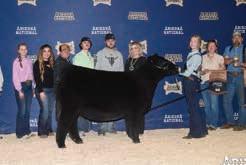



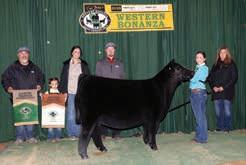






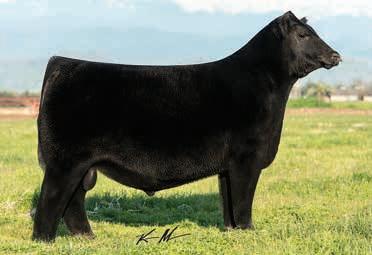














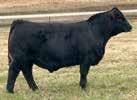








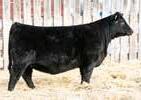
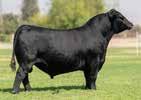





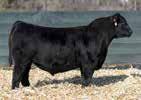





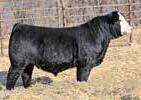





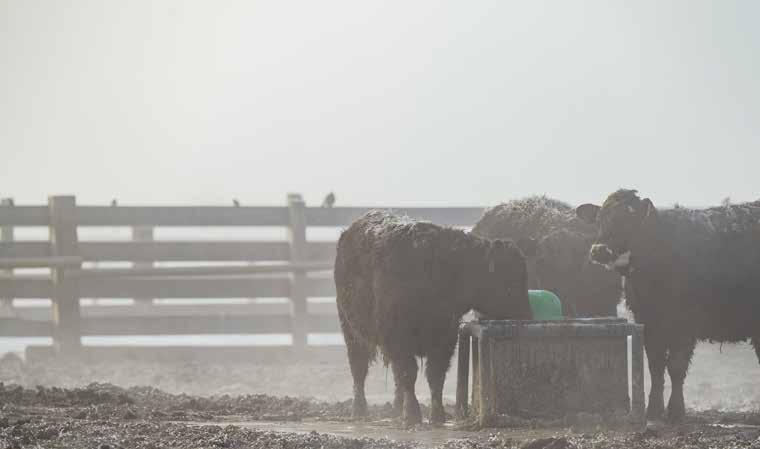

By Cheryl Kepes
Spickler Ranch North harnesses its genetic power through meticulous herd management and reliance on its own progeny for current and future success.
Spickler Ranch North calls home a section of east central North Dakota where the rolling hills are covered with a mix of native grasses and converge with the James River. The ranch, owned and operated by Justin and Sara Spickler along with their children; Wyatt, Will, Jessa, and Watson, has been in the family going on four generations. The registered, purebred Angus operation utilizes genetics developed over 20 years to produce functional bulls and females.
The Spicklers run their cow herd on 7,000 acres of owned and leased land. They rely heavily on the native grasses to grow and develop

their herd. The cow herd consists of roughly 800 registered Angus cows. The Spicklers sell 135 bulls during their annual production sale every December. The ranch is known for developing bulls that can thrive in various environmental conditions.
The purebred Angus females in Spickler Ranch North’s herd possess strong maternal characteristics and proven longevity traits. Many of the females’ pedigrees connect to longstanding cow families within the program. Females such as Queen Essa, Blossom, Selena, and
Cora along with their progeny all serve as the linchpins of Spickler Ranch North’s herd.
Cattle at Spickler Ranch North graze on cool and warm season grasses throughout the year. The Spicklers utilize rotational grazing and stockpile grass as well. Their goal is for their Angus cattle to sustain on grass for six months out of the year, a little longer if the snow doesn’t get too deep.
The females receive grass and alfalfa hay after they calve. However, for the most part, they must flourish with the resources provided in their environment. Any supplemental feedstuffs given to the herd

are procured to reflect the range setting. This management strategy has played an important role in the development of registered Angus females that can succeed in their environment with minimal input.
“By doing that generationally, we have found that our cow herd has adapted,” Justin Spickler said. “The cows that are hard-keeping, tight-hided and short-haired, they pretty much weed themselves out because they don’t breed back after the next year. So, it has developed a cow herd that has thrived just by basically selection pressure on the ones that can make it in the environment, other than changing the environment to fit the cattle.”




The breeding program at Spickler Ranch North consists of primarily AI work. The Spicklers breed all but 25 cows and heifers via AI. The select few that aren’t bred via AI, are utilized in the operation’s ET program.
The Spicklers AI the cows and heifers in groups of an average of 130 a week over the course of eight weeks. They start in May with groups of heifers and wrap up the end of June with mature cows. A synchronization protocol with CIDRs is used to help tighten the calving window.
Heifers are preg checked and then bred via AI a second time if needed before being exposed to a bull for natural service. Spickler Ranch North relies on its own herd sires to make genetic advancements within the herd. Though the Spicklers are quick to point out there are a lot of
excellent Angus bulls in the country, it works best for their operation to develop their own.
“We use a lot of our own bulls on our cows that we’ve decided are from cow families that have extra high-quality udders, small teats, tight udders, excellent fertility, good feet and disposition, and solid mothering ability. By using our own bulls, we can eliminate a lot of unknowns that we would possibly run into with other cattle,” Justin shared.
In addition to emphasizing maternal traits, the Spicklers stress performance. “We still want the cattle to have performance and grow. We have customers who like to buy bulls and seedstock that are deep, thick, and stout. And the easiest way we have found to do that is using our own bulls,” Justin said.
Much like the Angus heifers and cows, the bulls at Spickler Ranch North are managed to succeed in the environment where they are raised. Once the bulls are weaned, they are then developed on a 44 mcal ration until they are yearlings. The groups of bulls are evaluated at several steps along the way for disposition, performance, hoof quality, injury, and fertility.
The bulls in the Spicklers’ annual production sale range in age from calves to yearlings to coming twoyear-olds. Many of the bulls in the production sale in December will be turned out on grass after they are evaluated as yearlings. “This year’s sale bulls spent about 70 to 75 days on grass and that helps them to continue fill out and get moving and get exercise,” Justin stated. “By keeping them a little longer and turning them out on grass we have more of an opportunity to identify bulls that won’t hold up structurally in hoof quality or just actual injury.”
Most of Spickler Ranch North’s customers are commercial cattle
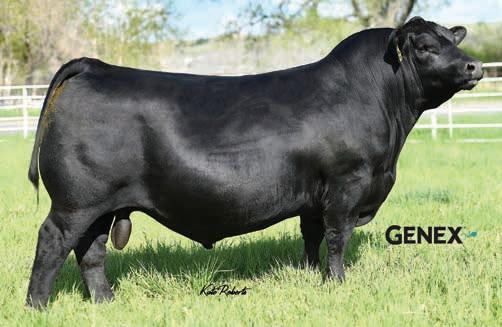
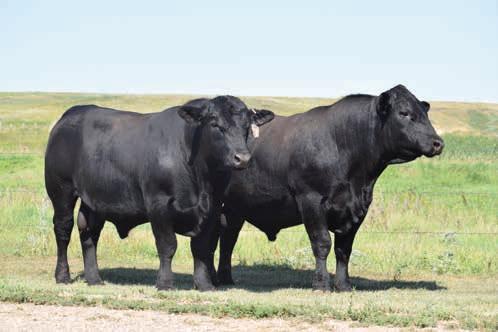

producers. The Spickler family holds great appreciation for their bull buyers. “I think we have the best customer base in the entire world,” Justin shared. “There’s a lot of Angus bulls in the world and
you can get them anywhere and they choose to get some in part or in some cases all their bulls from us and it’s a huge blessing and that’s absolutely what keeps us going,” he added.

The family credits their bulls’ popularity to consistency of offspring and good timing. For example, Spickler Ranch North’s bull S Powerpoint 5503 came on the scene when the industry needed a high-marbling Angus bull with a different pedigree. When S Architect 9501 emerged, the industry wanted a good-footed bull, and he fit the bill. Likewise, the timing has worked well for S Right Time 7861, he’s added fleshing ability, fertility, and good udder quality to Angus progeny at a time when producers are looking for those traits.
“Our focus hasn’t changed, we are still trying to get the cattle to fit all the important criteria we have laid out and some sires excel and if they excel at a time when the industry is looking for a change in genetics then it seems like things lineup and more people use them,” Justin said.

Though cattle are the mainstay at the ranch, the Spicklers also raise Quarter horses. In fact, Justin’s been a Quarter horse breeder and member of AQHA longer than he’s been an Angus breeder. The Spicklers operate with a small group of mares that are serviced by a Peptoboonsmal stallion.
The Quarter horses serve as the perfect mode of transportation on the ranch, particularly in the rocky, rough ground and through trees and ravines. The ranch crews utilize the horses to sort and gather cattle and for other ranch chores.

The Spicklers hold fast to an attitude of being flexible and able to pivot in a new direction. “We’ve known all along that God will take care of us, but we’ve had to learn to be really adaptable and responsive to change,” Justin explained. Their ability to adapt when circumstances change has served them well.
Justin and Sara have kept their eye on the future for quite some time. They work daily with the goal of creating an operation that will be viable for their children if they decide to join the ranch one day. “We’ve been well cared for all along, but we just felt like we were led to try to have that oppor-
UPCOMING SALE: Monday, December 8, 2025 1:00 pm CST - At the ranch
tunity for our children and if the none of the kids choose to come back, that’s obviously fine, and if they do choose to come back, that’s fine, too, and then our plan was in place,” Justin said.
learn more spicklerranchnorth.com



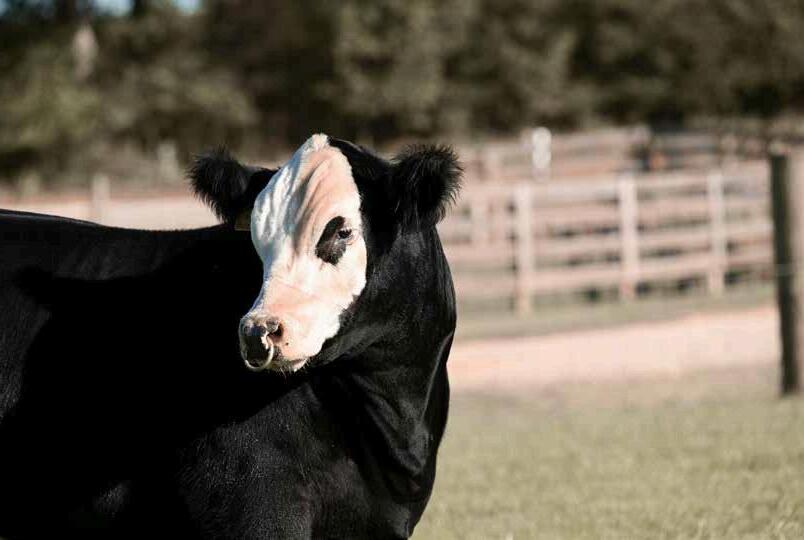
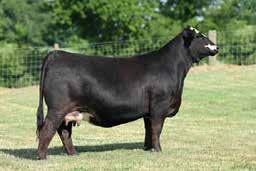

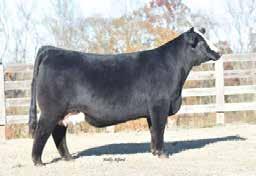

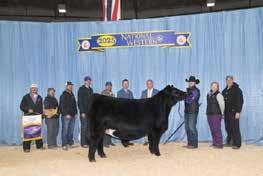


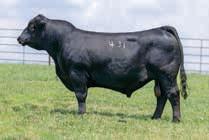




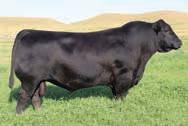








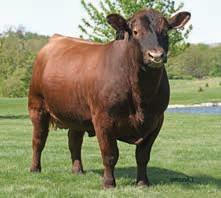







Yon Top Cut
Top Sort is one of the most unique young sires in the breed today. He is a multi-trait breed leader numerically and couples his stat-line with very unique phenotypic data including: added depth, fleshing ability, and visual muscle expression, plus a 99 BR, 120 WR, 118 YR, IMF ratio 135 and REA of 18.6/ 147 ratio. Top Sort is a very docile bull and appears to have transmitted that to his offspring. Owned with Yon Family Farms, SC





KG Justified 3023 x Sitz Reinvested 636a x GDAR Justice 622 #19464109
Justified 914 has far exceeded our expectations as a breeding bull. He is one of the most dominant sires we have used for improved hoof quality. His offspring possess extra length and extension while being deep bodied and square hipped. Early reports and pictures of his daughters have him positioned to be an udder improver. We anxiously await calving his first daughters next spring. Owned with GDAR, MT, & Rock Creek Angus, AR

Sitz Right Time 8034 x S Chisum 6175 x Leachman Right Time #18762372
Right Time has become our heaviest used sire. He is a potent sire of improved hoof quality, fertility, significantly added fleshing ability and is possibly the greatest sire we have raised for improved udder quality. At 8 years of age, he is still servicing cows naturally. This offering of his sons will be the most powerful to date. Owned with Stuart Simon, SD



SydGen Blueprint x S Whitlock 179 x Connealy Courage 25L #19437622
Architect has been used extensively in our operation for his combination of calving ease and performance. He is unparalleled here as a performance sire. His offspring have extra length and muscle. His dam is a descendant of the Blossom cow family and is backed by 4 consecutive Pathfinders. He and his sons will continue to positively influence our program for years.
Owned with Genex & Schaff Angus Valley

S Garrison K38 has been an outlier since birth. He has not disappointed us as a sire. His offspring are very deep-bodied, stout-made cattle with added fleshing ability. His first sons sold last December and were very well received. Possibly the most important genetic component is his impressive dam. She is the deepest bodied, easiest keeping cow on the ranch. Couple this with a very docile disposition and a WR 3/117 WR and she quickly rises to the top of our cowherd. A special sale feature in this offering is a son of 0903, Lot 1, S Right Time M379, #21019154. Owned with GDAR, MT

Health & Reproduction questions answered and explained.
contributed article by Dr. Lisa Kellihan, Associate Veterinarian Collison Embryo and Veterinary Services, Rockwell City, Iowa collisonembryoservices.com
onsidering that it has now spread to 24 states, you may have heard of the Asian longhorned tick (ALHT, Haemaphysalis longicornis) by now. The ALHT is native to eastern Asia and is already an introduced pest to Australia, New Zealand, and several western Pacific Islands. At some point, likely in or before 2010, the tick made its way to the U.S. and was first detected in New Jersey in 2017.
Since then, it has steadily moved westward as far as eastern Oklahoma at a rate of about three states per year. This is concerning to cattle producers and veterinarians for two main reasons: the ALHT can cause production and death losses on its own due to massive infestations and it is carrying with it the causative agent of Bovine theileriosis, Theileria orientalis Ikeda.
Asian longhorned ticks are light brown in color and are typically very small. Adult females are smaller than a sesame seed prior to feeding but swell to the size of a pea once full with a blood meal. ALHT can be found anywhere in the environment, but may prefer tall grasses and wooded areas.
They are a three-host tick but have no obligate species – all stages feed on just about anything and feed side-by-side with other tick species. ALHT larvae, nymphs, and adults can all be found feeding on a wide variety of hosts, including birds, pet dogs and cats, horses, livestock, and wildlife. The tick has also been found on people. However, there are currently no known risks to human health in the U.S.
Unlike other tick species, the ALHT female can reproduce without a male. Additionally, she can lay 1,000 to 2,000 eggs at a time. As a result, a single female can establish a new ALHT population in a new location. This also leads to large infestations on individual animals, causing growth and production losses due to stress and even death due to excessive blood loss in severe cases.
As mentioned previously, disease spread is another threat. The ALHT is the main vector for transmission of the blood parasite, Theileria orientalis Ikeda. This pathogen is mainly a problem in cattle and spreads to susceptible animals during tick feeding through the tick’s saliva.
Infected cattle can also spread the parasite to uninfected ALHT that feed on it. The parasite then replicates and matures in the digestive tract of the tick after it has been attached to the host for 48 to 72 hours, making the tick infective to its next susceptible host. Once infected, ALHT can remain infected on a pasture for up to two years under favorable conditions.
Additionally, once Theileria is established in an ALHT population, it can persist for generations. This is because ticks can get infected at any stage of development and remain infected through each stage. However, they only transmit Theileria when they feed on cattle as adults. Individual cattle may have large infestations of ALHT, but it only takes a few to transmit disease.
There are 11 major genotypes of Theileria orientalis present in the U.S. To date, only the Ikeda genotype has been shown to cause severe illness in animals. T. orientalis Ikeda is a protozoan parasite that
invades red and white blood cells of cattle, leading to the disease bovine theileriosis.
This disease is characterized by anemia and immune dysfunction. Signs and symptoms can look similar to anaplasmosis but, unlike anaplasmosis, theileriosis affects calves and young cattle in addition to adults. More specifically, signs of theileriosis can include lethargy, weakness, fever, loss of appetite, pale or yellow mucous membranes, abortions, difficulty breathing, and sudden death in severe cases. Infected cattle may begin to show signs of illness within three weeks of exposure to infected ALHT, and illness results in death in up to 5 percent of cases, especially in calves and pregnant heifers.
There is currently no approved treatment for theileriosis in the U.S., so supportive care is all that can be provided while the disease runs its course. Since T. orientalis Ikeda is a protozoan, not a bacterium, antibiotics are ineffective. Cattle that recover from theileria infections usually become lifetime carriers. This means that they can have relapses of disease if they become stressed at any time after their initial recovery.
Since there’s no approved treatment for theileriosis in the U.S., tick control and herd management are crucial to reduce the spread of T. orientalis Ikeda and protect cattle. This can be challenging because the ALHT reproduces so rapidly and because this tick spends most of its life on the ground, rather than on its hosts. However, slowing dis-
ease spread can be achieved using several strategies.
1. Reduce tick habitat by keeping grasses cut short and removing weeds and brush from grazing areas. Burning pastures in the spring before they green up will also significantly reduce the number of ticks in the environment. Leaving pastures ungrazed will not control ticks as they can survive for about a year without feeding and will happily feed on any wildlife that utilize the pasture.
2. Reduce tick exposure by keeping cattle out of wooded areas, restricting grazing in heavily tick-infested pastures, and providing chemical control for ALHT from March into November, when these ticks are most active. Combining the use of pesticide-impregnated ear tags, backrubbers, pour-ons, and injectable pesticides can be effective if used appropriately. Permethrins, organophosphates, and avermectins should be effective against the ALHT but should be used responsibly as this would be considered extra-label use and to avoid promoting the development of resistance. Work closely with your veterinarian to create a suitable tick control program for your herd.
3. Prevent introduction of ALHT and/or theileriosis by exercising caution when importing cattle, especially from regions where either parasite has been diagnosed. This was an important lesson learned in Kansas, where feeder cattle brought into the state from the eastern U.S. were apparently free of the ALHT, but
were infected with theileriosis, leading to incidences of the disease within the state. Imported cattle should be isolated for at least three weeks and treated for ticks prior to herd introduction.
4. Prevent unintentional spread of T. orientalis Ikeda by observing good biosecurity. Avoid re-using needles and sharing equipment between animals as these practices have been shown to transmit disease.
5. Finally, identify new infestations of ALHT by regularly monitoring herds for unusual tick species, especially in areas where the ALHT is known to be present. Focus on cattle that appear unthrifty, have patchy hair, or are experiencing poor weight gain or weight loss. ALHT tend to prefer certain areas of the body including the head and neck, inside the ears, under the tail, in the armpits and groin, and in udder skin folds.
As the ALHT and T. orientalis Ikeda continue to spread farther west, producers should be vigilant in monitoring for ticks and signs of theileriosis. If you suspect that you have identified ALHT in your herd or observe signs of anemia, lethargy, jaundice, abortion, or difficulty breathing in your livestock, contact your herd veterinarian to collect appropriate samples for diagnostics and consultation.
learn more collisonembryoservices.com
Dr. Lisa Kellihan is an associate veterinarian with Collison Veterinary Services in Rockwell City, Iowa.


#3963159 - Selling progeny and embryos by the $130,000 powerhouse Sandeen Donna 1316.

#3963161 - Selling some of the first progeny by the $200,000 Sandeen Donna 1142.

#4431573 - Offering multiple full and maternal siblings to this $185,000 crowd favorite in the 2024 sale.
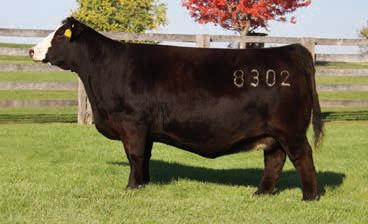
#3564034 - Selling a multitude of bred and open daughters, as well as embryos by the $2 Million producing Sandeen Donna 8302.

#3963163 - Selling several full and maternal siblings to the $81,000 Sandeen Donna 1717.
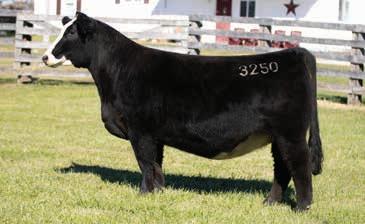
#4431607 - Offering maternal siblings to this $88,000 2024 sale feature by the dominant D198 donor.


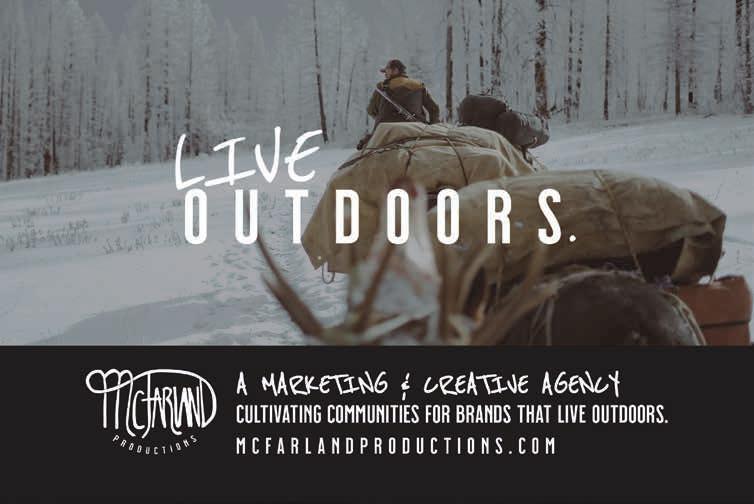


From shipping and processing to weather swings, stress costs cattle health and gain. Ordinary minerals pass right through, leaving your herd short when they need support most.
That’s why there’s MicroMaxx amino acid chelated trace minerals designed for maximum absorption. More mineral uptake means cattle stay on feed, handle stress better, and keep performing all the way to market.




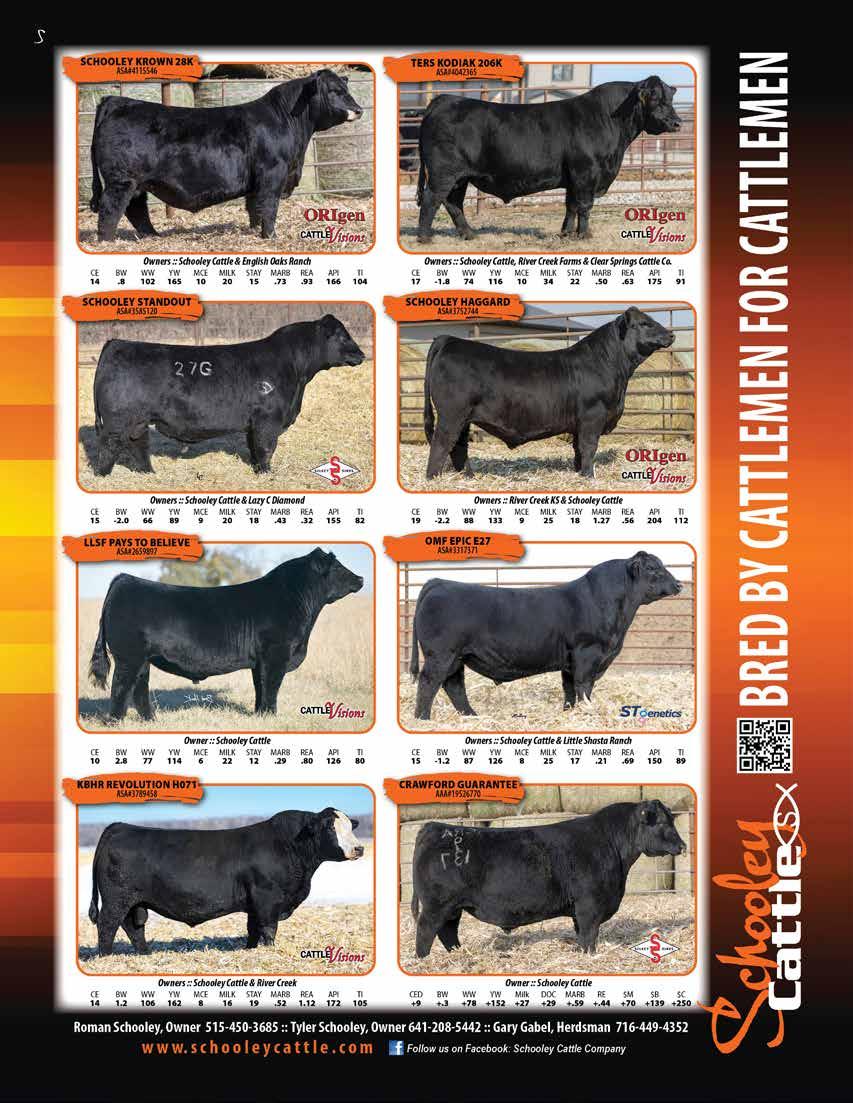



Tim and I were married in 1984 and that is when TK Angus started. We spent many a weekend before we were married designing our brand and choosing a name for what we hoped would be a long-term project. We chose the TK brand for Tim and Kim, and the TK Angus name has stuck. Our cow herd originated from 4-H and FFA heifers that Tim showed in the 1970s, including five grand or reserve grand champions at the Nebraska State Fair. Early on we both had off-the-ranch jobs. Tim taught ag and FFA initially, and then transitioned into ag accounting and crop insurance sales at the local co-op. I was a physical therapist at the local
We held our first production sale in 1989. Our herd gradually grew to the point that it needed full-time attention, so in 1991 when the opportunity arose to return to my family’s farming operation in Gordon, Neb., we loaded up the cows and made the move. Our cow numbers eventually outgrew the location in Gordon, so we started
Tim grew up on a ranch south of Wood Lake, Neb., and we eventually found a ranch between Valentine and Wood Lake and returned to Tim’s roots in Cherry County. We made the move to our current location in 2013. Our son, Rick, was in pharmacy school and our daughter, Sara, had just graduated from high school when we made the move. Rick completed pharmacy school and he and his wife, Jenn, returned to work in Valentine. Rick eventually retired from his pharmacy position at the hospital and joined us at the ranch, so we are excited to have the next generation in place. I retired from my physical therapy career after 34 years to be extra help on the ranch and the babysitter for our two grandchildren, Gavin and Charlotte – the third generation of TK Angus.
We were very excited last year when Sara finished her family medicine residency and she and her husband, Jud, made the decision to move to Valentine as well. They are great help during our annual production sale, as well as for big projects like branding. We are blessed to have our whole family here and involved!
Our operation has grown and evolved over the past 44 years, but our mission has remained the same. We follow a strict adherence to our breeding philosophy based on functionality. For our commercial bull customers to be successful, they need cattle that have structural soundness, good feet, body and mass, and fertility. Mating decisions are made with a focus on our replacement females, as we live longer with those females than their bull mates. Our priority is to produce females that breed up in a 45-day breeding program, and that possess ideal udder quality and teat size. The bulls utilized in our breeding program have either been raised in our own
herd or are bulls that we own. We spend a lot of time and travel looking for bulls that check all of the boxes in our breeding philosophy and include them in our herd bull battery. The results of this long-term breeding program are cattle with consistent phenotypes, and the longevity to remain in the herd and keep our operation sustainable.
What is your most requested dish or what is your favorite thing to make?
“During the winter, my family loves soup and the one they request most often is Cheeseburger Soup. It pairs well with cornbread muffins (Famous Dave’s from a box) or freshly baked Rhodes frozen rolls (if I have the time to get them thawed and raised). The branding crew usually requests Meatball Sub Casserole. And if I have to bring a dessert to a family meal, chocolate cream pie is most generally at the top of the list.”
What is your favorite cooking tip or trick?
“Grandma taught me that you should always have something in the pantry that you can use to either create a quick meal or add to a meal if you have unexpected company. And since I am not a fancy “from scratch” cook and because I spent many years juggling a career, school activities, volunteer activities, and helping on the ranch, I have learned that you can use pre-made items to make something “homemade” and still have a table full of satisfied men at the end of a meal.
Monday, December 15, 2025
At the ranch, east of Valentine, Neb.

Kim Marlatt
1 lb. ground beef
4 T. butter, divided
¾ c. chopped onion
¾ c. chopped or shredded carrots
¾ c. diced celery
1 t. dried parsley flakes
1 ¾ lb. (about 4 c.) cubed peeled potatoes
3 c. chicken broth
¼ c. all-purpose flour
16 oz. Velveeta, cubed
1 ½ c. whole milk
¾ t. salt
¼ to ½ t. pepper
¼ c. sour cream
Step 1: In a large saucepan over medium heat, cook and crumble beef until no longer pink. Drain and remove from pan. In the same saucepan, melt 1 tablespoon butter over medium heat. Sauté onion, carrots, celery, basil, and parsley until vegetables are ten- der, about 10 minutes. Step 2: Add potatoes, broth, and beef. Bring to a boil. Reduce heat and then simmer covered for 10 to 12 minutes or until potatoes are tender. Step 3: Meanwhile, in a small skillet, melt remaining 3 tablespoons of butter. Add flour; cook and stir until bubbly, 3 to 5 minutes. Add to soup; bring to a boil. Cook and stir for 2 minutes. Reduce heat to low. Step 4: Stir in cheese, milk, salt and pepper; cook until cheese melts. Remove from heat, blend in sour cream.
Note: This is my family’s favorite soup. It is a little tedious to make, but well worth the effort. I usually make a double batch so that we have plenty of leftovers.



Kim Marlatt
3 c. milk
1 c. sugar
1/3 c. flour
1 square unsweetened chocolate
1 square semisweet chocolate
3 T. butter

3 egg yolks
1 t. vanilla
baked pie shell
whipped cream (I add sugar and vanilla)
Step 1: In a heavy pan, heat 3 cups milk until scalding hot but not boiling. While the milk heats, mix in a bowl: 1 cup sugar and 1/3 cup flour. Mix with a whisk. Step 2: Melt in a small bowl: 1 square unsweetened chocolate, 1 square semisweet chocolate, and 3 tablespoons butter. Stir until smooth and combined. Step 3: Add the sugar mixture and the chocolate mixture to the hot milk. Stir to combine. Step 4: Beat 3 egg yolks. Add a small amount of the hot mixture to the eggs and then add the egg mixture back into the remainder of the hot mixture. Cook until thick. Add 1 teaspoon vanilla. Step 5: Pour into a baked pie shell. Cool completely in refrigerator. Cover with whipped cream (I beat mine with sugar and vanilla). Refrigerate until serving.
Note: One of my favorite childhood memories is my grandma making me chocolate pudding. The best part was licking the pan while the pudding was still warm!

1 loaf Italian or French bread, cut into 1-inch cubes (if it’s a large loaf you may not need the whole thing)
8 oz. cream cheese, softened to room temperature
“My first recollection of cooking was with my grandma on the farm in Gordon. She immigrated from Denmark as a little girl and could make anything from scratch. It wasn’t always fancy, but it was always delicious, and there was always plenty as she was usually cooking for hired men in addition to her kids and grandkids. My mother was also an excellent cook and entertainer, and she taught me (or at least tried to teach me) to be organized and prepared when cooking, especially for a group. My grandma passed away just before I started high school, and my mother and my aunt were both working at the bank, so cooking for the guys at the farm during the summer became my job when I wasn’t helping in the field. I had plenty of flops that I still get teased about once in a while at a family gathering, but most generally everyone was full and satisfied when they took off for their afternoon work.
What is your least favorite job in the kitchen?
I would have to say that my least favorite kitchen jobs are putting groceries away (I would much rather get started with a cooking project) and doing dishes/cleaning up (Mother always said I am a messy cook like my grandma).”
learn more tkangus.com
for printable recipes stockmanmag.com

SUB CASSEROLE
Kim Marlatt
½ c. mayonnaise
1 t. Italian seasoning
¼ t. pepper
2 c. shredded mozzarella cheese, divided
1 bag frozen Italian style meatballs, thawed
24 oz. jar pasta sauce Dried parsley for garnish
Step 1: Preheat oven to 350 degrees Fahrenheit. Arrange bread cubes in a single layer in an ungreased 9x13 baking dish (it takes a deep dish). Make sure cubes fully cover the bottom of the dish. Step 2: In a bowl, combine cream cheese, mayonnaise, and seasonings until smooth. Spread mixture over bread slices. Sprinkle with ½ c. shredded mozzarella cheese. Step 3: Gently mix together spaghetti sauce and meatballs. Spoon over cream cheese layer. Sprinkle the top evenly with remaining shredded cheese. Step 4: Bake uncovered for 30 to 35 minutes. If you notice it is getting too brown, just loosely cover with some aluminum foil. Allow to cool for a few minutes, then slice and serve. You can sprinkle dried parsley on top if desired.
Note: My family are all cheese lovers, so I often use more cheese than the recipe calls for. I have also used an Italian cheese blend or sprinkled in some grated Parmesan cheese as well.









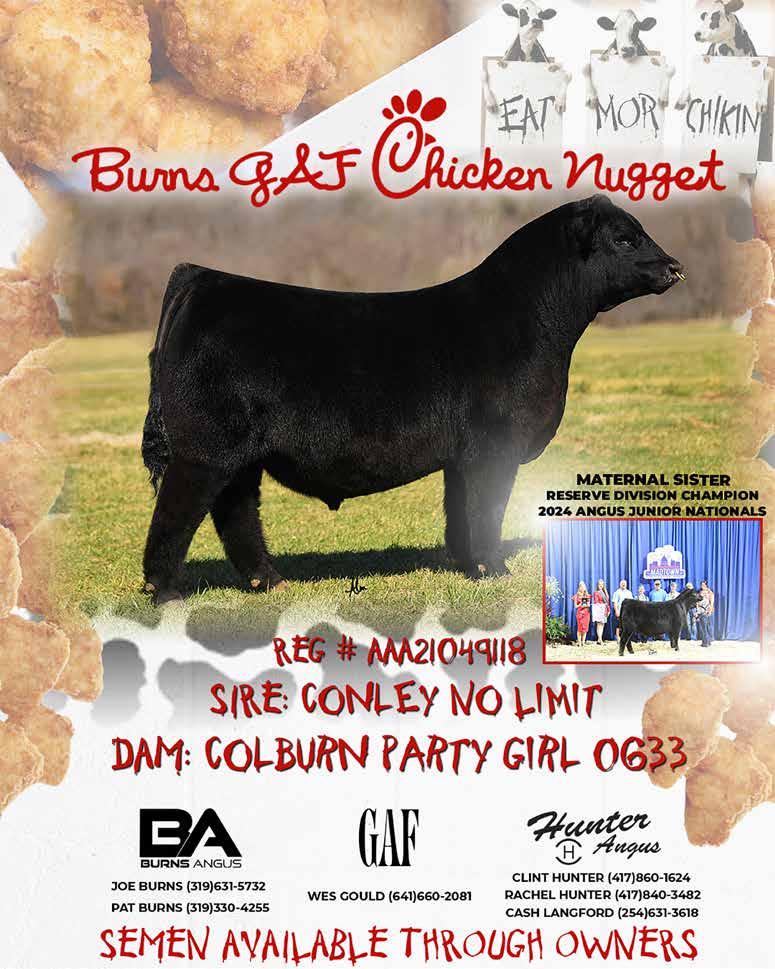


















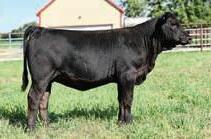














Fitting the FnF™ Beef Calf Cover to a new-born increased the actual hide temperature of the calf by 32 degrees Fahrenheit in just four minutes!
All beef ranchers are seeking to maximize their returns from their operation. A main income generator is the number of live calves that make weaning. The weather during late winter and spring can, and does, influence the number of newborn beef calves that survive some very brutal weather that can literally devastate the very survival of these new-borns.

Woolover® Ltd, based in New Zealand, is no stranger to devastating stock losses. In fact, Woolover® Ltd was “born of necessity” back in 1993 after two snowstorms, 10 days apart, claimed the lives of 2 million lambs and 40,000 calves. The answer is WOOL - Working 24/7
USDA figures suggest towards 80,000 new-born beef calves perish annually from hypothermia. Woolover® Ltd then set about designing and making a beef calf cover that was totally biodegradable, made from wool, is designed to fit an 85 lb new-born beef calf, and would simply “fall off” after 3- 4 weeks having ensured the new-born beef calf survived, was accepted by the mother, and captured some additional growth rates along the way.
The Result: The Woolover® Fit N Forget (FnF™) Beef Calf Cover
• New-born calves fitted with the FnF™ Beef Calf Cover are simply not at risk of dying from hypothermia, and they will grow faster.
• The cover is totally biodegradable with wool providing the warmth and absorbency to wick moisture away from the hide and the Hessian Substrate providing some strength. Be it rain, snow, windchill or, simply from the birth process, covering a new-born beef calf with the FnF™ Beef Calf Cover makes sound financial sense. The cover will last for up to 3 – 4 weeks and then falls off.
• Designed for an 85 lb. live weight beef calf at birth, which is the optimum weight, but will also fit smaller calves.
• Wool is providing the warmth, is absorbent, breathable, comfortable to wear, is totally biodegradable and will ensure the Thermo – Neutral Zone, being the heart/ lung area, is kept at a constant temperature, both day and night despite the worst possible conditions = survival.
Dr. Clint Hilt, leading Veterinarian with MWI Animal Health, based in Power, Montana, who assisted with a trial of 50 FnF™ Beef Calf Covers on his clients’ newborn calves said, “THESE COVERS ARE LIVESAVERS.”
The trial was conducted on a day when it was -23 degrees Fahrenheit and, by simply fitting a FnF™ Beef Calf Cover to a new-born, the actual hide temperature of the calf increased by 32 degrees Fahrenheit in four minutes!
The Woolover® Limited FnF™ Beef Calf Covers: ORDER ONLINE at www.wooloverdirect.com or phone: Busse
FnF™ Beef Calf Covers are sold in units of 100 or packages of 10.







contributed article by Roman Schooley Bloomfield Livestock Market, Inc., Bloomfield, Iowa bloomfieldlivestockiowa.com
A review of the current cattle market.
orn and soybeans are coming in at a record pace with crops all over the Midwest doing very well for farmers! Huge yields and ideal conditions are making the harvest go well and that means farmers will be gearing up to buy all classes of cattle. The future board is also moving into record territory once again this fall.
Your fat cattle trade has softened some lately, down $12 to $15 dollars per hundredweight from the highs in mid-September. Bids strengthened some weeks in October. For example, early one-week, bids started at $2.29 in the North and then gained ground to end on a Friday at $2.35. The South continued to keep pace with the North selling at $2.32 to $2.34 during that same time.
On a positive note, the April fat cattle board reached $247.120 in mid-October to really help feedlots lock in those big yearlings they’ve been stocking the yards with. Packers are very aggressive to forward buying those April fats offering a plus $2 to $3 dollar basis.
Feeder calf runs really slowed down in October due to the lack of yearlings available and the calves
have been slow to market due to farmers in the fields. Demand for yearlings continues to strengthen while calves have weakened due to seasonal fluctuations in October temperatures. The CME index currently sits at $367.35; a couple bucks higher than last month’s report.
Your November feeder calf board continues to set new records sitting at $375.90. I would imagine the LRP specialists have been very busy lately writing contracts for those calves. Look for November to be a popular time for feeders to come to the auctions, while the weather should be more consistent for the buyers to feel better about starting groups of calves.
Breeding stock will be heating up as we continue into the fall. I look for bred heifers to test the market here very soon as well as fall pairs. Most farmers will be done in the fields here soon and should show good support for the stock cows.
Slaughter cow and bull markets continue to hold strong while supplies are short. Look for kill cows to soften once the big runs start up in the West as they will be preg checking and hauling calves to town. The end of October we held our first
stock cow sale of the fall, and it was a good test of how the market will look as we go into winter.
If you have any marketing needs don’t hesitate to call any one of us at the barn. We would love to have the opportunity to work for you! As always, take time off and enjoy your family and remember to count your blessings!
Roman Schooley, Bloomfield, Iowa
Roman Schooley owns Bloomfield Livestock Market and Schooley Cattle Co. in Bloomfield, Iowa. As president of Schooley Cattle Co., Roman leads the breeding decisions of the seedstock operation which consists of 550 registered Simmental and Angus cows. Schooley Cattle Co. utilizes IVF to produce breed leading genetic advancement. The company hosts an annual production sale the first Friday in February at the ranch; selling 18-monthold and yearling bulls and a select group of open and bred heifers. Roman also owns and assists in the operations at Bloomfield Livestock Market which primarily serves producers in Iowa, Missouri, and Illinois. He and his wife, Elizabeth, have three children: Hannah (23), Haven (20), Houstin (17), and one grandson, Weaver (2 months).

Protected Processing!


-Doyle Smith, Oklahoma - "Your calf catcher has greatly improved our safety while tending newborn calves, we never have to worry about being blindsided by an overly protective mother. Excellent workmanship!"
www.AngusCattleGenetics.com Annual “Black Friday” Production Sale every November. Follow us on Instagram & Facebook for daily updates on our program. Visit our website:
Josh Scheckel | 21582 Hwy 62, Bellevue, Iowa call: 563.872.4112 | email: josh@jjscheckel.com









FOR IMMEDIATE RELEASE
AMERICAN ANGUS ASSOCIATION® SEEKING 2026 SUMMER INTERNS
Applications for internships are open through November 12, 2025.

The American Angus Association® offers a hands-on, tailored learning experience for young cattle enthusiasts. Internships are offered in several departments and provide opportunities for growth in a student’s chosen field during the 10week summer program. Students will be immersed in a fast-paced, professional environment and work side-by-side with experts at the forefront of the cattle industry.
“This internship has been so impactful to my career journey,” reflected Cassidy Strommen, 2025 Angus Media Digital Marketing Intern. “I was able to sharpen a variety of practical marketing skills and help Angus producers promote their operations while learning from a supportive and encouraging team.”
Interns will be based out of St. Joseph, Missouri; some positions offer opportunities to travel. Students who are interested in growth and networking opportunities, have a good attitude and are willing to jump into new and challenging situations for hands-on experience should apply at angus.org/ careers by November 12, 2025, to be considered.
Angus MediaSM – Digital Mar-
keting: This position will provide valuable experience in email marketing, graphic design, digital advertising, social media content creation and data analytics. The intern will work alongside an experienced team to develop skills and contribute to real cattle producers’ marketing campaigns and success. Applicants should demonstrate an excitement and passion for Association work and the cattle industry. Previous management or oversight of business social media accounts is preferred.
Angus MediaSM – Publications: This writing-intensive opportunity offers the chance to join a multi-media effort, which includes the Angus Journal print publication and the AJ Daily electronic newsletter, as well as the Angus Journal’s website and social media presence. The internship can be tailored to the intern’s strengths, but many duties can be anticipated, including traveling to industry events. Experience in news and feature writing, editing and photography are strongly suggested.
Communications: From print writing to graphic design, photography, and video, the communications intern will gain multi-faceted agricultural communications experience to enhance their marketability as a young professional. The communications intern will help with the promotion and coverage of one of the Association’s biggest events, the National Junior Angus Show, and will travel with the team to the event. Applicants should have strong writing and design skills and have completed coursework in news and feature writing, editing and design. Experience in photography, video and social media are preferred.
Events & Junior Activities: The
intern will assist in planning and executing youth events hosted by the National Junior Angus Association (NJAA), including preparation, correspondence and coordination for shows and events. Applicants should be self-starters, detail-oriented and outgoing with the ability to work well with others. Livestock and event planning experience is preferred, but not required. Travel to the 2026 National Junior Angus Show (NJAS), Leaders Engaged in Angus Development (LEAD) Conference and other events is expected.
Angus Genetics Inc. (AGI®): Students pursuing their master’s degree or Ph.D. in animal breeding and genetics are encouraged to apply for the AGI summer internship. The intern will have the opportunity to work with the world’s largest single beef breed genomic databases, conducting research on economically relevant traits in beef cattle. The internship will focus on research that involves data analysis. Candidates should have experience in analyzing animal breeding data sets and genomic data.
If students prefer to spend their summer on the ranch, the Angus Foundation is accepting applications for the Angus/Talon Youth Educational Learning Program internship. The Talon internship program provides college-aged students the unique opportunity to spend their summer on an Angus operation. Interns gain extensive ranching knowledge while enhancing their skills as advocates for the beef industry. Students interested in participating in the program can learn more at https://www.angus.org/ foundation/our-mission/youth/talon-youth. Deadline is also November 12 through angus.org/careers.
- By Jessica Hartman, Communications Specialist
















(continued...)
Wilks Ranch to donate WILKS Rita 4728 as the 2026 Foundation Heifer Package.
The Angus Foundation is proud to announce WILKS Rita 4728 as the 2026 Foundation Heifer Package, generously donated by Wilks Ranch of Eastland, Texas. This female represents the kind of progressive, phenotypically correct genetics that define the Wilks program. Their offering showcases a breeding program built on form, function and balance and a commitment to the future of Angus.
As a long-time supporter of the Angus Foundation, Wilks Ranch recognizes the value of contributing to initiatives that promote education, youth and research within the breed. Their donation of the 2026 Foundation Heifer highlights a continued commitment to supporting programs that strengthen the Foundation’s mission.
“It’s quite an honor,” said Kevin Reed, asset manager for Wilks Ranches. “What [the Angus Foundation] does for the youth to give them opportunities, tools and the finances to grow, to do what they love and build a foundation for their future. We’re proud to contribute.”
WILKS Rita 4728 is a standout female from a maternal line that has proven themselves. Her maternal sister, WILKS Rita 4067, commanded $100,000 as Lot 6 in the 2024 Wilks Ranch Sale. Her dam will headline the upcoming fall production sale, and a maternal brother is slated to be a highlight in the 2025 Wilks Ranch Bull Sale. The
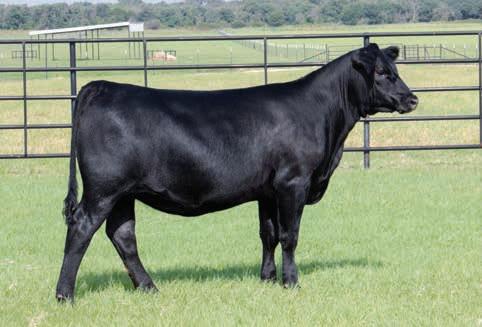
consistency of this cow family is a testament to the quality of female Wilks Ranch is offering as this year’s Foundation female.
Rita 4728 ranks in the top 1% for both $Beef and $Combined indexes, offering a powerful growth spread, elite structural correctness and eye-catching phenotype. She’s the kind of female that blends performance with presence; built and bred right and backed by a story of success.
“She’s cowy. That’s what her mom is – she’s just a good female,” said Aaron Kaiser, seedstock manager at Wilks Ranch. “I think this female’s going to be the same way but does it in a really neat number package and a neat pedigree.”
Rita 4728 is correct in her confirmation, and she’s got the numbers to back it up. Kaiser believes she has the versatility to be a donor, a show heifer or a female to produce bulls for a commercial producer.
Kaiser joined the Wilks Ranch team 13 years ago, bringing with him an understanding of Angus genetics and a passion for youth. Raised in West Texas, he showed Angus steers as a kid and converted his family’s commercial herd to Angus in junior high. Today, he’s raising his own children in agriculture.
“Agriculture teaches you how to
work hard and how to be responsible,” Kaiser said. “Agriculture is the way of life. The neat thing about ag is - I love the way I was raised, and I wanted my kids to have the same experience as I did.”
That commitment to youth is part of what makes the Foundation Heifer Package so meaningful to the Wilks team. They’ve hosted interns, mentored students and supported scholarships, all with the goal of shaping the next generation.
The 2026 Foundation Heifer Package will sell Friday, January 9, 2026, at the 87th National Angus Bull Sale during Cattlemen’s Congress. The sale will start at 2 p.m. at the Oklahoma State Fairgrounds in Oklahoma City. Proceeds from the sale benefit the Angus Foundation and its vision to provide limitless opportunities to enhance excellence and innovation within the Angus breed.
The package supports the Angus Fund, which provides unrestricted funding for a variety of programs supported by the Angus Foundation including Beef Leaders Institute, the Leaders Engaged in Angus Development (LEAD) conference and Angus University.
- By Molly Biggs, Communications Specialist








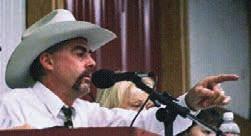


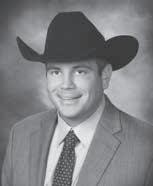





Category



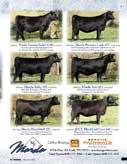
Alpha syndicate
Behlen Country
Bloomfield Livestock Market
Blue Lake Plastics
BritAmerica Mgmt. Group
C&C Farms
Cattle Visions
Cheyenne Livestock Expo
Chicken Nugget bull
CJ Brown Studios
Colburn Cattle Co.
Collison Embryo
Conover, Al
Conover, Jeanne
Crawford, Scott
CSL Auctions Inc.
Dixie Valley Ranch
Friedrich, Parker
Gabriel Ranch
Gilchrist, Kyle
Gold Buckle Cattle Services
Graham Angus
Hawkeye Breeders
Integrity Stock Shots
J.J. Scheckel Angus
Jallo Angus Ranch
Keller Broken Heart Ranch
Keyes Angus
Layton, Dustin
Linn Haven Farms
Linz Heritage Angus
Lorenzen Farms
Lowderman, Monte
Lowderman Auction Options
Maplebrook Farms
Matthews Coach’s Corral
Marda Angus Farms
McFarland Productions
MCM Polled Herefords
Mid Continent Farms
Missouri Simmental Assn. Sale
Pearls of the Prairie Sale
Quaker Hill Farm
Rawhide Portable Corral
Reds on the Prairie Sale
Renovo Seed Roper
Safety Zone Calf Catchers
Sandeen Cattle Co.
Schermer Angus Cattle
Schooley Cattle Co.
Sealpro Silage Barrier Films
Slate Group
Sonstegard Cattle Co.
Spickler Ranch North
Stetson
Summit Ag Group
Sydenstricker Genetics
The Judge Source
TK Angus
Tracer Minerals
Voss Angus
Wall Street Cattle Co.
Warner Beef Genetics
Weishaar, Seth
Wheeler Angus
Wilks Ranch
Woolover Ltd.
Y-Tex Corporation
ZWT Ranch


About the Stockman.

I grew up in central Illinois, but I finished high school in Florida. My dad farmed row crops and ran cows and hogs. We showed cattle all over the United States. I showed my first steer at the age of 5! I was hooked and still love it today. I’ve had the opportunity to be a part of some very prestigious operations such as Southern Cattle in Marianna, Florida; Tennessee River in Fort Payne, Alabama; Herndon Farms in Lyons, Georgia; Shady Brook Angus in Leoma, Tennessee; and Ankony Farm in Clarkesville, Georgia. Every operation was unique and a very good learning experience. I manage Wall Street Cattle (WSC) now, and I also have a foot-trimming business. WSC runs Charolais, Red Angus, and Angus.”
Describe your best and worst day.

There have been lots of good and bad days on the ranch. But I’d say the best day for me was our inaugural sale. The amount of compliments we received on the way the cattle were displayed and the overall excitement was unbelievable!”


Which animal (any species) has left the greatest impact on you?

The greatest impact on our operation has been from one of our herd sires, Iron Horse. His progeny has been overwhelming accepted and continues to make a difference in our herd.”
The most important lesson you’ve learned in this business?

Times change. I think the best lesson I have learned is being able to adapt but hold tight to the direction you want the operation to go.”

Wall Street Cattle Co. - Lebanon, Mo.


Your favorite non-farm activity to do in your free time?

Other than showing cattle, I’m an avid college football fan. Go Dawgs!!”
Your go-to sorting apparatus?

My sorting apparatus of choice is a flag.”
What is the most used tool on your farm? How old is it?

The most used tool on the farm is a 2015 4x4 Ford feed truck – it’s used every day.”
UPCOMING BULL SALE: Sunday, March 1, 2026 At the ranch, Lebanon, Mo.

What about the beef cattle industry excites you the most?

The most exciting thing about the beef industry is the impact we can make and all the friendships I’ve made over the years across the country.”
What is your favorite job on the farm?

My favorite job on the farm is evening cow checks as well as the matings of the cows.”

in the spring cove female connection sale Sat., November 22 Bliss, Idaho • 3 p.m. MST
STERLING ISABEL Y69-1

Sire:
Kaboom K243 KCF
STERLING ISABEL 442

FLUSH TO THE BULL OF THE BUYER’S CHOICE STERLING ISABEL 905 +*19930797
Sire: Hoover No Doubt • Dam: Baldridge Isabel B082
Dam’s Sire: G A R Prophet
Don’t miss this opportunity to flush this standout with a CW of +80 and MARB of +1.35 to the bull of your choice! Flush carries a minimum of 6 (no cap) with a pregnancy guarantee of 2.
STERLING ISABEL 905 FLUSH

SELLING CHOICE OF CELL CLONES OF BALDRIDGE ISABEL Y69
STERLING ISABEL Y69-1 OR Y69-2
An tremendous opportunity to purchase your pick of these cell clones of the infamous Baldridge Isabel Y69. Each sells with a late fall calf at side sired by EXAR Jameson 3789B.
STERLING ISABEL Y69-2

OPEN FALL HEIFER STERLING ISABEL 442
+*21055211 • 7-29-24
Sire: Basin Jameson 1076 • Dam: Baldridge Isabel E318
Dam’s Sire: Basin Payweight 1682
Offering this standout out of Baldridge Isabel E318 sired by the $600,000 Basin Jameson 1076. She ranks in the top 5% or better for WW, YW, Milk, Angle, CW, $W, $G, $B and $C.
PICK OF THE ‘2016’ SPRING 2026 HEIFER CALVES
G A R SUNRISE 2016 +*18635927
Sire: G A R Sunrise • Dam: G A R Ingenuity 3132
Dam’s Sire: G A R Ingenuity
Selling the pick of ‘2016’ heifer calves (after DNA) that are due late February 2026 by: Baldridge War Cry K041 • ST Wizard 1585 • Schiefelbein Executive • Poss Pendleton.
G A R SUNRISE 2016 HEIFER PICK




